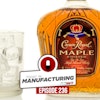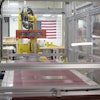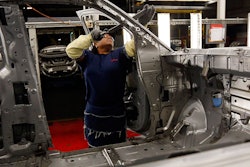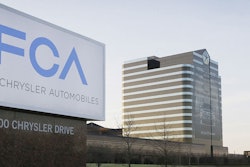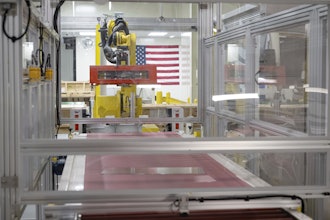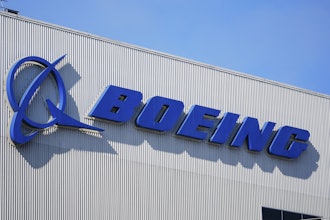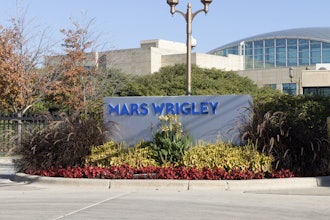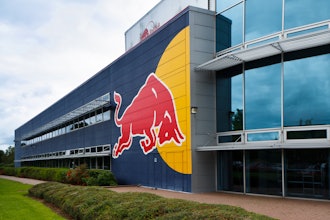REPO-01
DeAngelis, Landon Dowdy, Kate Rogers, Aditi Roy>
ANNOUNCER: This is NIGHTLY BUSINESS REPORT with Tyler Mathisen and Sue Herera.
TYLER MATHISEN, NIGHTLY BUSINESS REPORT ANCHOR: Stall speed. The sluggish growth of the winter extended in the spring, raising new concerns about the health of the U.S. economy.
SUE HERERA, NIGHTLY BUSINESS REPORT ANCHOR: Crude realities. Profits drop sharply at two of the world`s largest oil producers as low crude prices challenge big oil.
MATHISEN: Big promise? Is the much hype smart home not so smart after all?
All that and more tonight on NIGHTLY BUSINESS REPORT for Friday, July 29th.
HERERA: Good evening, everyone, and welcome.
The S&P 500 hit an intraday high, but closes just shy of one. When it comes to the economy, there was no spring revival. The economy expanded much less than forecast in the second quarter, surprising investors who were expecting a pick up following the weak start to the year.
The Commerce Department reported a 1.2 percent rise in gross domestic product. The broadest measure of goods and services produced in the nation. Estimates were for an increase of 2.6 percent and growth for the first quarter was revised lower, raising questions about the pace of the 7- year-old economic recovery and what the Fed might do next.
Steve Liesman has our story.
(BEGIN VIDEOTAPE)
STEVE LIESMAN, NIGHTLY BUSINESS REPORT CORRESPONDENT: Amid the heat of summer, Washington got a blast of cold economic air on the economy. The government reported tepid growth in the second quarter of just 1.2 percent, more than half of what economists expected. The report showed the prior two quarters were weaker than originally thought and it raised worries that the economy could be slowing down. Curiously, consumer spending did well with business investments that kept growth down.
BRICKLIN DWYER, BNP PARIBAS: Consumers are the economy. That`s the piece that matters. That`s reflective of strong payrolls and fairly resilient wages. So, that`s the piece that matters. That business investment component, you know, companies continue to give money back to shareholders, vis-a-vis share buybacks or dividends or whatever. They`re not willing to make that investment and that trend hasn`t changed.
LIESMAN: Business investment has now declined for three quarters and some believe it only gets worse from here, as concern about Britain`s leaving the European Union and the U.S. presidential elections could keep CEOs from green-lighting tech and equipment spending.
But some economists point to a sharp decline in inventory, as a reason for optimism. They say companies aren`t likely to keep destocking their shelves at the rate of the second quarter. So, inventory building could help future growth. They also believe government spending growth will help rebound. The weak growth seems to rule out additional tightening from the Federal Reserve.
STEPHEN WOOD, RUSSELL INVESTMENTS CHIEF MARKET STRATEGIST: The odds are going to play some 50 percent and the Fed is going to move a quarter point in December, but I think in so much as international factors, Brexit, what`s happening the Bank of Japan. So, I think the Fed is going to be more cautious.
LIESMAN: A word of caution. GDP reports are subject to sometimes large revisions. Actual growth numbers could be revised to be as little as zero or as much as 2.5 percent, but for now, investors have only the current number, showing they have to think more about a weaker 1 percent economy than a 2 percent economy.
For NIGHTLY BUSINESS REPORT, I`m Steve Liesman.
(END VIDEOTAPE)
MATHISEN: So, what does today`s GDP report suggest about the health of the economy?
Jim Cahn is chief investment officer with Wealth Enhancement Group and he joins us now.
Jim, welcome. Good to have you with us.
Does today`s number which is probably I would characterize it as worrisome, suggest that the economy is dangerously close to slipping into negative territory or that monetary policy, the Fed, low interest rates have lost their power to do anything?
JIM CAHN, WEALTH ENHANCEMENT GROUP CIO: Well, let`s be honest. Today`s report was clearly disappointing. Growth that`s up 2 percent. In this economy right now is very disappointing to see. But if we look at the underlying factors, the underlying factors related to business investment, and the second quarter has some very unique characteristics, especially around the Brexit decision.
I think if you look at the markets now, it`s almost like Brexit never happened, but if you were a CEO sitting there in early June making a decision about whether or not to build a plant, invest in more productivity, whatever it might be that ewe need to grow your business, Brexit weighed on your mind and you didn`t make that decision.
Now, on the flip side, you might say, look, are we reaching stall speed? Is this the speed at which the economy is going to turn around and plunge a recession? And I think that the data would point to the fact that this is not.
And if you look at consumer spending, consumer spending was up 4 percent, which means that the consumers are starting to feel the benefit of lower unemployment. Unemployment in this country is up 4.7 percent. They`re starting to feel the benefit of some wage growth. It`s tepid, but it`s starting to pick up. And people are feeling a little bit better about prospects.
HERERA: So, what do we do then with this report? Is it like the fluke in the unemployment figures we got earlier this year? Do you put that aside, given what you just laid out with Brexit? Do we ignore this report and wait and see for other evidence of economic expansion?
CAHN: Well, I wish it was it was that easy. I think the first thing we need to do is reset sort of what are our expectations are for GDP growth?
So, if you talk to most economists, they`ll say that GDP should go about 3 percent in the U.S. That`s what`s going historically.
But if you look at the decade in 1995 and 2005, new workers entering the workforce grew about 2.1 percent per year. Over the last decade, we`ve only seen workers entering the growth workforce at 0.5 percent a year. Which means that productivity in order to get back to that 3 percent number has to increase by 1.5 percent a year.
So, my -- if I look at the productivity growth, if you look at new workers entering the workforce, I think we should really be happy if we get this economy growing at 2.6 percent. I think we have to look forward to the third quarter and ask if the inventory burn off in the second quarter was sufficient and if we get enough clarity around geopolitical issues, and we don`t see a pick up, we should worry.
MATHISEN: All right.
CAHN: If we do see a pick, then I think we`re probably on a pace for continued strong growth.
MATHISEN: All right, Jim, thank you very much. Jim Cahn is chief investment officer with Wealth Enhancement Group.
And later in the program, given the strong consumer spending component of the GDP report, our market monitor has some consumer-related stock picks to make you wealthier.
HERERA: Speaking of the consumer, consumer sentiment fell slightly this month. The University of Michigan`s index for July shows that higher earning Americans see Britain`s exit from the European Union as cause for concern. The report noted that global uncertainties as well as the presidential election will keep some consumers cautious.
MATHISEN: On this last trading day of July, the Dow posted its sixth consecutive month of gains. But for the day, stocks like the economy didn`t move much.
Here are the closing numbers. Blue chip Dow index off 24 at 18,432. NASDAQ, however, rose 7 points to its highest level this year, and the 500 was up three just and that was just shy of a record. For the month, NASDAQ was the big winner of more than 6 percent, as you see there.
But recently, stocks have been trading in a narrow range. And as Bob Pisani reports, August has the potential to shake things up.
(BEGIN VIDEOTAPE)
BOB PISANI, NIGHTLY BUSINESS REPORT CORRESPONDENT: OK. We`re August. Now, here`s the bad news. August is traditionally poor for the stock market. In fact, it`s the worst month for the S&P since 1987. While it`s traditionally a poor month, it`s usually on light volume and low volatility unless there`s a crisis. There was one, August 24th last year when the Chinese devalued their currency. There was one in August 2011 when the Greek government debt crisis happened.
Then, there`s the election, which is a real wild card. First, as an unconventional candidate in the form of Donald Trump, and there`s a little history problem. There`s no incumbent running. According to Merrill Lynch, since 1928, the S&P has dropped in average of 2.8 percent in presidential election years that don`t include an incumbent seeking re- election. But in years when the sitting president is up for reelection, the S&P has average returns of 12.6 percent.
Now, why is that? The theory is that incumbents tend to obsess over economic issues and promote market friendly policies, according to Merrill.
All right. Is there any good news here? Well, actually, there is. A lot of these old trader salts (ph) are not working. So, take "Sell in May, and go away". Remember that? That`s not working again this year. The S&P is up 5 percent since the start to have May.
Maybe August will be a winner, after all.
For NIGHTLY BUSINESS REPORT, I`m Bob Pisani at the New York Stock Exchange.
(END VIDEOTAPE)
HERERA: New cancer and hepatitis treatments helped Dow component Merck (NYSE:MRK) post an unexpected increase in second quarter revenue. Merck (NYSE:MRK) has been trying to grow sales with new medicines after several years of declines, offsetting a loss of some of its treatments to generic competition. Earnings and revenue both topped Wall Street expectations and shares managed to finish the session up slightly.
MATHISEN: Oil prices steady today after a week long selloff. Domestic crude settled up today, about 1 percent, but for the month, it`s been a bad one. Crude is down sharply 17 percent.
It is those low oil prices that are hurting big oil. ExxonMobil (NYSE:XOM) and Chevron (NYSE:CVX) reported results that were below expectations. In fact, ExxonMobil (NYSE:XOM) reported its smallest profit since `99. shares of Exxon fell, while Chevron (NYSE:CVX) rose.
Jackie DeAngelis has more on big oil`s big miss.
(BEGIN VIDEOTAPE)
JACKIE DEANGELIS, NIGHTLY BUSINESS REPORT CORRESPONDENT: The main issue for ExxonMobil (NYSE:XOM) and other energy companies this quarter was international growth and continued low commodity prices, even though crude got a slight bounce in the second quarter.
CEO Rex Tillerson said the industry environment is volatile and the company is focusing on cost control. Refining did help the bottom line, even though margins were squeezed and the company will maintain its dividend of 75 cents a share. Chevron (NYSE:CVX) earnings were a few cents better than expectations, but there were some impairments that impacted the bottom line.
Also, a dividend darling, the company maintained its payout of more than a dollar.
But the energy majors have been cautious, signaling a challenging road ahead and that view is more cautious than the rest of the street.
ANTHONY GRISANTI, GRZ ENERGY FOUNDER AND PRES.: We remember what happened last year fourth quarter and this year, first quarter, where demand basically fell off a cliff. And oil wasn`t being used.
Oil`s a very seasonal market. Once it ends, demand drives up. If you continue with the supply the way it is, you`re going to see prices trade into the lower $30s.
DEANGELIS: Meantime, cost cuts are generally a positive in challenging times, but there comes a point where only so much can be done, and analysts are also questioning how sustainable dividends are. Cash flow is tight and oil prices look like they`re taking another dip down. The immediate future appears to be murky for the energy industry, with crude prices falling into a technical bear market territory, meaning they`re down 20 percent from their June high, there could be a rough road ahead.
Reporting from the NYMEX, I`m Jackie DeAngelis.
(END VIDEOTAPE)
HERERA: Still ahead, some of the hottest stocks of the sizzling summer.
(MUSIC)
HERERA: The computer network of Hillary Clinton`s campaign was reportedly hacked. According to "Reuters", this is part of a broad cyber attack on Democratic political organizations. It also follows two other hacks, one on the Democratic fundraising committee for candidates for the House of Representatives, and the other, the Democratic National Committee.
The tech sector led the market this week, and this month, making technology the hottest group of the summer season so far.
Landon Dowdy tells us which stocks are sizzling.
(BEGIN VIDEOTAPE)
LANDON DOWDY, NIGHTLY BUSINESS REPORT CORRESPONDENT: Summer is traditionally time for investors to set it and forget it when it comes to portfolio management. But there are some stocks that sizzled during the summer month, specifically in the tech sector. Out of the ten sectors in the S&P 500, tech is up the most since the summer solstice, jumping 8 percent. It`s been a top performing summer sector for the past six years, but on average, tech lands in fourth place on the list of the ten sectors.
So, what specific stocks are sizzling? Seagate is up more than 40 percent this summer. Thanks to positive guidance earlier this month on the heels of a restructuring plan.
Linear Technology (NASDAQ:LLTC) and eBay (NASDAQ:EBAY) both up 31 percent this summer. Linear stocks have turned around this year after the firm received a bid from Analogue Devices for about $15 billion. And as for eBay (NASDAQ:EBAY), the e-commerce company reporting earnings last week of very positive same store sales and solid full year guidance, which has helped to push that stocks higher. And after strong results from Amazon (NASDAQ:AMZN), Facebook (NASDAQ:FB) and Google (NASDAQ:GOOG), the sector may get even hotter.
For NIGHTLY BUSINESS REPORT, I`m Landon Dowdy.
(END VIDEOTAPE)
HERERA: Higher deliveries lift revenue at UPS, and that is where we begin tonight`s "Market Focus".
The world`s largest package delivery company beat sales expectations in its later quarter, while profit also rose and matched estimates. The company also reiterated its earnings guidance for the full year. Shares of UPS fell fractionally though to $108.10.
Profit was cut in half at Phillips 66. The energy company said a gas glut impacted the company`s refining margins, but earnings still managed to beat expectations. Revenue also fell, but it came in shy of estimates. Shares were down 19 cents to $76.06.
Strong demand for trucks and SUVs helped lift sales at AutoNation (NYSE:AN), but that still wasn`t enough to beat estimates. The auto retailer did however report profit that was better than expected. So, shares were up more than 2 percent to $53.35.
Cigna is lowering its full year outlook as the health insurer posted profits for the quarter below expectations. The company cited weakness in its group disability and life division. But revenue did rise, and that beat estimates. Cigna shares fell, though, 5 percent to $128.96.
Currency headwinds and weaker sales dragged down profit and revenue at Bloomin Brands. The parent company of Outback Steakhouse did manage to beat earnings targets however, although its revenue did come in a little light. The company also issued guidance for the year that was below forecast. Shares down 97 cents to $17.98.
Board of directors for the beer maker SAB Miller said it will recommend shareholders approve the sweetened takeover offer from rival Anheuser-Busch InBev. The revised bid, which we reported on earlier this week was for more than $100 billion. Shares up 2 percent to $129.44 of Anheuser-Busch.
Shares of Series Therapeutics plunged today after the biotech company said its drug intended to treat an intestinal disorder failed a test trial. The company said it will work with the Food and Drug Administration to make modifications to the treatment. Shares down 69 percent to $10.94.
And several private equity firms may be exploring a buyout of information technology company Hewlett-Packard (NYSE:HPQ) Enterprise. This according to the website, The Information. A potential deal could be worth more than $40 billion. Hewlett-Packard (NYSE:HPQ) declined to comment, but shares did rise 3 percent to $21.02.
HERERA: And now to our market monitor who likes stocks that he says should benefit from rising consumer spending. When he was on in October of 2015, we recommended Disney (NYSE:DIS), which is down 8 percent, Home Depot (NYSE:HD), which is up 14 percent, and United Healthcare, which is 23 percent higher.
He is John Traynor. He`s the chief investment officer at People`s United Bank`s Wealth Management.
Good to see you again, John. Welcome back.
JOHN TRAYNOR, PEOPLE`S UNITED BANK`S WEALTH MANAGEMENT CIO: Good to see you. Thank you.
HERERA: Let`s get to your stock picks. Disney (NYSE:DIS), it`s had some rough going, however, but I was just at Disney (NYSE:DIS). People were certainly spending. So, you still like the stock.
TRAYNOR: Absolutely. We want to be exposed to the consumer. But what we really like about Disney (NYSE:DIS) is content. If you look at Netflix (NASDAQ:NFLX), you look at Hulu, all of these new delivery technologies, they need content and that`s what Disney (NYSE:DIS) does.
They stumbled because of concern about ESPN, which is a real concern. Something we`re watching. Are people turning off the cable box and going somewhere else? Well, when they go somewhere else, they still want that content.
So, we own Disney (NYSE:DIS) and we think this is a great time to add to a position if you own it currently.
MATHISEN: Number two is Microsoft (NASDAQ:MSFT). You say a price of $60 is in view within 12 months.
TRAYNOR: Yes, it`s a fairly conservative estimate. Love to be surprised on the upside.
What Microsoft (NASDAQ:MSFT) is doing is, and I don`t know if it`s appreciated by a lot of investors, they are dramatically changing their business revenue model, moving away from a release of software, where they get a big rush of funds to a more annuitized revenue stream, as they move their business to the cloud, which is a great -- it`s a great move for them. We think that could lead to some P/E multiple expansion, if they become more and more successful. So, that shift in revenues to the cloud is going to have a big impact on Microsoft (NASDAQ:MSFT).
HERERA: And you also like Starbucks (NASDAQ:SBUX) with a price target over the next 12 months of $61 and you`re looking at their long-term potential here, specifically as it relates to China.
TRAYNOR: Correct, correct. If you look at their earnings report, they disappointed on U.S. comps. But China, the comps were a little over 7 percent, so they had a very good report from our standpoint on the international side. Plus, they`re expanding. They`ve got the mobile app where you can order through your phone to get your order set, your latte set before you get there.
So, they`re doing a lot of interesting things.
MATHISEN: July was perhaps, John, a surprisingly good month in light of the Brexit vote, and all kinds of other things that were going on. What do you see between now and Election Day, August, September, October.
TRAYNOR: You`re correct. July was a very good month and what we liked about it was it was much more of a risk on type market, where people focused on those companies that are growing earnings. It wasn`t driven by the defensive stocks, the utilities and telecoms. So, it was a structure of the market rise. It was very, very helpful.
What we think we`re going to be focusing on between now and especially you talk about the month of August earlier, the election and the economy. We have the GDP number this morning and we actually liked it. I know the initial number wasn`t good, but if you look at final demand, that was about 2.4 percent, which is what we expected. So, we like the number.
You`re going to have employment number next week. We think that will be a good number. The more investors focus on the economy, the better off the markets are going to do.
I`m a little bit of a political junkie, so I watched both conventions. And I can tell you, the election, it`s going to be exciting. It`s going to be exciting and it`s probably going to be a little confusing for investors.
HERERA: Yes.
MATHISEN: You bet.
HERERA: Indeed.
John, thank you so much. Have a great weekend.
TRAYNOR: Thank you, thank you.
HERERA: John Traynor with People`s United Bank`s Wealth Management.
MATHISEN: Well, coming up, the promise of the smart home was big and cool and high-tech, but the reality is turning out to be something different.
(MUSIC)
HERERA: And here`s a look at what to watch for next week. Monthly auto sales are out for July. Also on Tuesday, two Dow components report earnings, Pfizer (NYSE:PFE) and Proctor and Gamble. The biggest release comes Friday with July`s employment report. Investors will want to see if the bounce back that we saw in the last report has held and that`s what to watch for next week.
MATHISEN: A number of startups are settling down just north of California`s Silicon Valley. Portland, Oregon`s Silicon Forest is fast becoming an entrepreneurial hub for health and fitness companies and it lies, of course, in the shadows of Nike (NYSE:NKE)`s headquarters.
Kate Rogers (NYSE:ROG) is in Portland tonight.
(BEGIN VIDEOTAPE)
KATE ROGERS, NIGHTLY BUSINESS REPORT CORRESPONDENT: While the U.S. men`s gymnastics and diving teams prefer to hit the international stage in Rio, one start up in Portland is helping them go for gold.
APDM wearable technologies created custom wearables for Team (NASDAQ:TISI) USA to do more than just count steps. These devices study the quality of each move they made so that coaches and athletes can analyze the data to enhance performance.
MATTHEW JOHNSON, APDM WEARABLE TECHNOLOGIES: We can capture the gymnast running up to a vault and so we can look at -- we can look and characterize their body movement. So, looking at efficiencies. So, are we trying to improve their speed? So, let`s look at efficiencies. Or if they`re trying to improve their rotations, let`s look at their form.
ROGERS: The intersection of fitness and technology made Portland a great place for APDM to call home. Local resources like the Portland State University Business Accelerator where the startup is based have also helped give Portland`s ecosystem legs.
JOE MUNK, PORTLAND STATE UNIV. BUSINESS ACCELERATOR: There`s just an abundance of highly qualified, highly educated people that are available to startups right now, and the other is that we`re seeing more and more availability of money and funding here.
ROGERS: Venture capital funding in Oregon hit a five-year high in 2015 according to Dow Jones venture source, proving investors aren`t shying away from good ideas outside of New York and San Francisco. More broadly, the Portland metro was ranked a top five location for small businesses in 2015 according to data from the Kaufman Foundation.
Fitness and nutrition are thriving industries here in Portland with athletic powerhouses like Nike (NYSE:NKE), Adidas and Columbia Sportswear (NASDAQ:COLM), calling the area home. And now, newcomers like Society Nine are getting into the race.
Le got her big idea teaching kickboxing and noticing a problem among female fighters. Their gear didn`t fit properly.
LYNN LE, SOCIETY NINE FOUNDER: As a community, I`m passionate about and these women deserve their athleticism deserves respect and the way to get to that point is by saying to them, you deserve products just as good as men`s.
ROGERS: He took that message nationwide in 2015, first on kick starter and now on the web and in a handful of local gyms. But Le is staying true to Society Nine`s Portland roots.
LE: There`s also a really strong community of fostering local artisans, local businesses. And so, between that type of camaraderie, as well as the work life balance and the environment itself and then you lead that with this core innovation culture that`s here, it`s really a hard place to beat.
ROGERS: One thing`s for sure: Portland startups aren`t trying to find their way out of the Silicon Forest anytime soon.
For NIGHTLY BUSINESS REPORT, I`m Kate Rogers (NYSE:ROG) in Portland, Oregon.
(END VIDEOTAPE)
MATHISEN: Kate packs a big punch there.
All right. To read more about Portland`s start up, head to our website, NBR.com.
HERERA: A number of tech companies want to make your home high-tech, allowing you to control your thermostat with your phone or communicate with your refrigerator. But is the smart home really smart or is it still just hype?
Aditi Roy reports.
(BEGIN VIDEOTAPE)
ADITI ROY, NIGHTLY BUSINESS REPORT CORRESPONDENT: Smart home gadgets like the Nest thermostat, Samsung`s smart fridge and Amazon (NASDAQ:AMZN)`s Echo promise to save time and increase efficiency around the home.
But there are real challenges, preventing mass adoption. As we learned when we tested out the August block`s new integration with Amazon (NASDAQ:AMZN)`s Echo, which is supposed to make it easier to lock your home.
Here`s how it works. First, you install the August Smart Locks, the Bluetooth lock, and Wi-Fi Bridge needed to make the conduction. Next, set up your Amazon (NASDAQ:AMZN) Echo with the Alexa voice recognition built in. And then you give the commands Alexa, tell August to lock my front door. Assuming the Wi-Fi is working, your door should look. That`s how it should work.
But when we took part in the demo, it wasn`t so seamless.
After several tries, it finally worked.
VOICE: August checked the door and it was locked.
ROY: If you`re wondering why anyone would go through all of these hops, August CEO Jason Johnson told us that the company decided to integrate with Amazon (NASDAQ:AMZN)`s Echo based on customer feedback.
JASON JOHNSON, AUGUST CEO: The challenges if you have to use an app for every device, smart lock or thermostat or lights, it`s bit cumbersome. So, you know, what Alexa is doing is allowing people to not use an app at all, just use your voice. I think our customers and people using these technologies really appreciate that convenience.
In order to take full advantage of this technology, it will cost you. The Amazon (NASDAQ:AMZN) Echo will run you about $180. And then adding the cost of the August Smart Lock and the Wi-Fi Bridge for a grand total of $460.
According to Juniper Research, the smart home market could reach $71 billion by 2018, up from $33 billion in 2013. But a number of roadblocks still stand in the way, including security, hacking concerns, frustration over the installation process and cost. It`s no surprise some say analysts say that these obstacles represent a barrier to mass market adoption of smart home tech.


